HISTORY IN ART: The port before it was the port
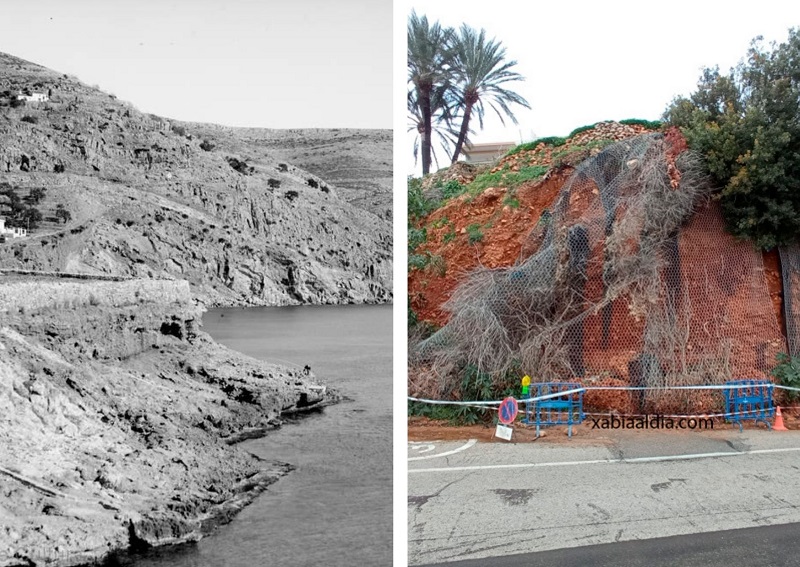
Rocks of the Caleta del Racó (IPHE. LOTY-08330) / The slope of the port today (Image: xabialadia.com)
Monday 22nd February 2021 | DAVID GUTIÉRREZ PALIDO (Xàbia AL DÍA)
Last November the port of Xàbia was in the news after part of the slope next to the port and below Calle Caleta, had collapsed, fortunately without causing any injury. Today we know that the tender process has already been done to be able to repair and protect it, but we are going to move a little further back in time and learn what was there before the existence of that slope and how important it was for the eyes of some painters.
The corner formerly known as La Caleta del Racó (not to be confused with the current name of La Caleta located in the Cala Blanca area) was a small U-shaped cove that was sheltered by the foot of the headland of Cape San Antonio. If there is something that characterized this corner, it is its irregular walls with rock formations, stones and reddish and orange sands, leaving a small gravel beach where the boats were beached and some formations that, from what is now Calle Caleta, progressively descended towards the sea. This left a small corner of shallow water with stones and rocks where the transparent water revealed bluish and greenish colours.
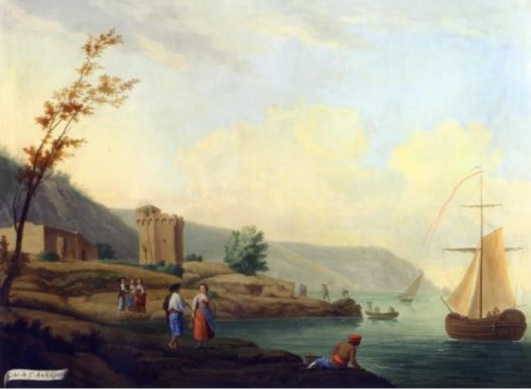
The suitability, protection and tranquility of this space meant that it was used since Roman times as a natural jetty and that in the 16th century the so-called Castillo de San Jorge or de la Mezquida was built. But after time, also in this same place a small dock was chosen for the construction of which was completed in 1879. In this way the small Caleta del Racó remained as a horseshoe-shaped space between the walls of the dock and the rocks which stood out from the place where the slope to be repaired is located.
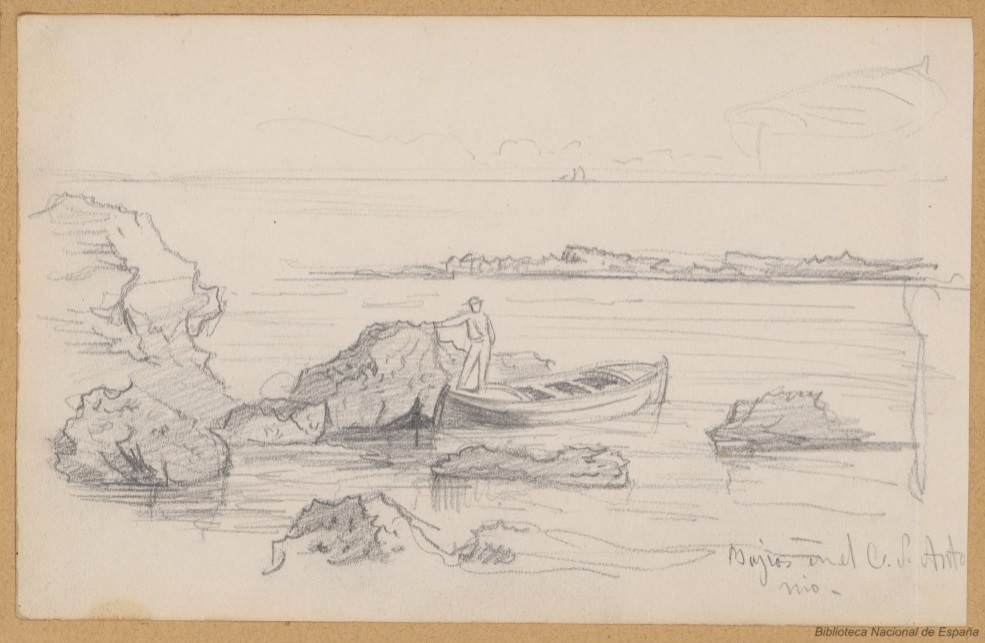
This picturesque corner where the rocks met with the transparent waters was a great attraction for some painters who came to the coast of Xàbia to represent its sea and its landscape. One of the first painters to capture this little corner was Rafael Monleón y Torres (1843-1900) who around 1860 drew a fisherman with a boat between some rocks with the Cap de San Martín in the background. The point of view of this drawing had to be drawn from this ancient cove representing those rocks and irregular formations on the sea.
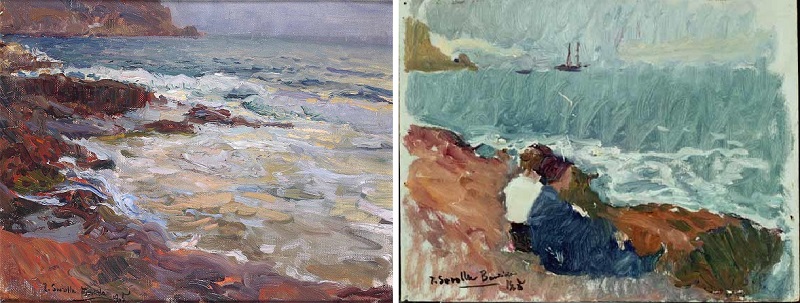
Later came Joaquín Sorolla y Bastida (1863-1923) who painted numerous pictures around this corner, but specifically, Mar de Jávea (1905. Private collection. BPS 1521) represents the rock formation that was located in the place where the collapsed slope is that we are talking about today. Also from Calle Caleta you could go down almost to the sea through some paths, which were used by the painter and his family where they sat to draw the sea and at the same time be able to make a produce a painting like the one It is preserved in the Sorolla Museum titled Jávea (1905, inv. 715. BPS 2405).
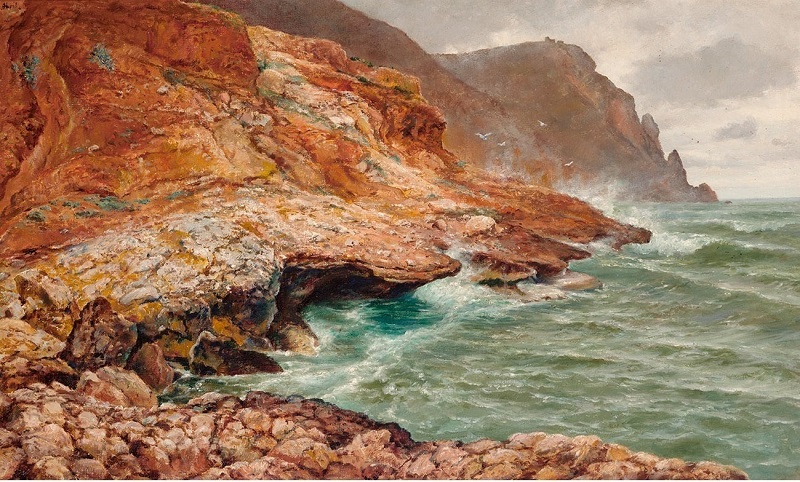
His friend and fellow student at the Real Academia de Bellas Artes de San Carlos, Salvador Abril y Blasco (1864-1924) also came to Xàbia between 1915 and 1917 and takes as a reference the same point of view that Sorolla used years before producing the recently auctioned painting Paisaje Costero (1915-17. Private collection) where it represents in a faithful and realistic way that corner of rocks with their holes and reddish colors that enter towards a raging sea.
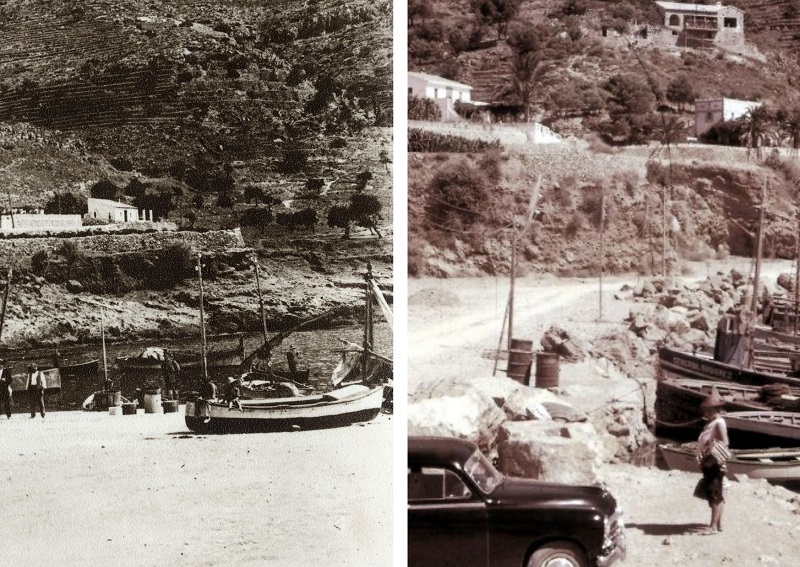
But time passes, the modern world has imposed and the needs that meant from 1908 an extension of the small pier was proposed. Although the projects were approved and the works began in 1933, they had to be halted due to the start of the Spanish Civil War and were not resumed until 1947. For the execution of this extension it was necessary to completely remove the Caleta del Racó and open it up to get to build the second breakwater. Although there was a time when these reddish walls remained, the corner painted by Sorolla and Salvador Abril was gradually lost and forming a vertical wall that with time has deteriorated and disappeared.
Now, the collapse of the wall has brought those striking warm colors to light in a more colorful way. But although times change as well as the landscape, we must not forget the picturesque corner that existed in the past and that to get a visual idea of how it could be, we only have to visit the landscape of Cala Blanca to get a slight idea of what it was.
Click below to read the original article in Spanish on Xàbia AL DÍA





